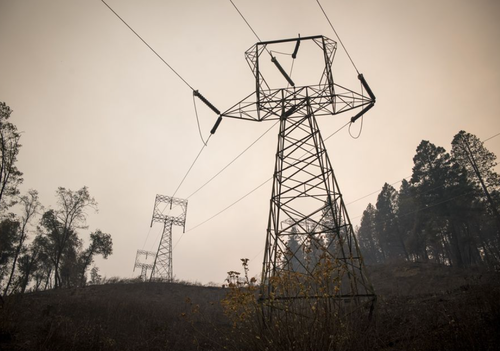Satisfaction in government schools has been declining for years, even before the stress test of pandemic response resulted in spectacular failure by the public system. Now we have evidence that students lost ground during school closures and fumbled efforts to teach kids who weren’t physically present in the classroom. Democrats and Republicans who otherwise disagree on so much regarding education share dismay over the state of public schools and a mutual interest in alternatives that offer something better.
“In 2022, the National Center for Education Statistics (NCES) conducted a special administration of the NAEP long-term trend (LTT) reading and mathematics assessments for age 9 students to examine student achievement during the COVID-19 pandemic,” the NCES announced Sept. 1 as part of its ongoing National Assessment of Educational Progress. “Average scores for age 9 students in 2022 declined 5 points in reading and 7 points in mathematics compared to 2020. This is the largest average score decline in reading since 1990, and the first ever score decline in mathematics.”
In a separate statement, NCES Commissioner Peggy G. Carr acknowledged that “there’s been much speculation about how shuttered schools and interrupted learning may have affected students’ opportunities to learn” during the course of institutional responses to COVID-19. She pointed to previously documented surges in reports of mental health issues among students, increases in crimes and disruptions in the classrooms, and other consequences of introducing chaos to kids’ lives with lockdowns and poorly handled transitions to distance learning that, in many cases, constituted abandonment of students. Now we see the impact on public schools’ core task of educating children.
The worst losses were among 9-year-olds who were already struggling. Students in the 90th percentile for reading lost two points, with scores declining from there until those in the 10th percentile lost 10 points. Those in the 90th percentile for mathematics lost three points, and in the 10th percentile lost 12 points. Almost everybody lost ground, but those struggling to begin with saw the greatest drop.
Already suffering from years of declining public confidence, government schools can only blame themselves for their inability to respond flexibly and effectively to the pandemic—a rare but certainly not unforeseen occurrence. The educational damage done to children can only further erode the standing of public educational institutions among people who hoped for better in difficult times.
“Americans’ confidence in U.S. public schools remains low, with 28 percent saying they have a great deal or quite a lot of confidence in the institution, similar to 32 percent last year,” Gallup noted in July. “Both figures are down from 41 percent in 2020, reflecting a brief surge in the early months of the pandemic after registering 29 percent in 2019.”
That is, after a fleeting moment of hope that public schools would rise to the occasion, many parents were disappointed by packets of take-home worksheets, unimpressive Zoom lessons, and masked kids separated by plexiglass shields when they returned to class. Rock-bottom assessments won’t improve their mood.
Americans’ views of government education institutions have varied a bit over the years, but mostly trended downwards from 1975 when 62 percent of the public expressed confidence in the public schools. By 1987 that was 50 percent, by 2004 it stood at 41 percent, and now little more than a quarter of the public thinks tax-funded educrats can get it done.
What else changed since the 1970s is the partisan divide on confidence in public schools. Then, Democrats, Republicans, and independents expressed nearly identical levels of confidence. Over the years, faith in the schools declined across the board, but now there’s a vast political gap.
“The percentage of Republicans having a great deal or quite a lot of confidence in public schools fell from 34 percent in 2020 to 20 percent in 2021 and 14 percent today,” Gallup adds. “Since 2020, independents’ confidence has declined nine percentage points to 29 percent and Democrats’ has remained fairly high—currently 43 percent, versus 48 percent in 2020.”
That gap can be largely explained by the very different perceptions Americans of opposing viewpoints have of what’s broken in public schools.
“As the 2022-23 school year begins, YouGov asked Americans their opinions on a variety of issues facing their local K-12 schools,” YouGovAmerica recently reported. “The poll finds large gaps in the level of concern expressed by Republicans and Democrats over many school-related issues. While Republicans are most concerned about liberal indoctrination, a lack of parent involvement, and inappropriate books, Democrats are most concerned about book banning, bullying, and teacher shortages.”
Importantly, while Republicans (39 percent) and Democrats (40 percent) voice nearly identical levels of concern over “learning loss due to COVID-19,” continuing concern over “the spread of COVID-19” is largely confined to Democrats (44 percent) while only 12 percent of Republicans share such concerns.
Similarly, the 2022 Education Next Poll finds 65 percent of Democrats continue to support face masks in classrooms while only 19 percent of Republicans agree. Logically enough, teachers unions, which championed school closures, masks, and other restrictions, dominate public-school policies in much of the country, and have long been closely associated with the Democratic Party, inspire partisan responses. Sixty percent of Democrats view unions positively, compared to 22 percent of Republicans.
True, the pandemic is fading, we hope, as a concern and source of discord. But Americans continue to be disappointed by government schools while disagreeing on what the problems are and how they should be addressed. They’ll certainly share dismay over plummeting NAEP assessment scores, but after COVID-19 is forgotten, Americans will likely continue to argue over the ideological content of lessons, the classroom treatment of race relations, and what learning materials are appropriate for young minds.
“Did the last few years mark a great pivot point, signaling the emergence of two distinct, and distinctly partisan, views of how best to serve students?” asks Education Next. It’s a question its own data, along with that of YouGovAmerica and Gallup, answer largely in the affirmative (though there are certainly more than two views of what education should offer to be found in the population).
The one encouraging sign is that Education Next found some support for school choice: vouchers (50 percent of Democrats and 49 percent of Republicans), tuition tax credits (64 percent of Democrats and 59 percent of Republicans), charter schools (38 percent of Democrats and 55 percent of Republicans), and homeschooling (43 percent of Democrats and 68 percent of Republicans). That’s not an overwhelming endorsement, but it is an opportunity, especially in areas where support is concentrated, for families to exit the system and try something different. Hopefully that opening will grow along with shared dismay at student learning losses.
The post Despite Polarization, Americans Agree: School Learning Losses Are a System Failure appeared first on Reason.com.
from Latest https://ift.tt/RlOHILg
via IFTTT








